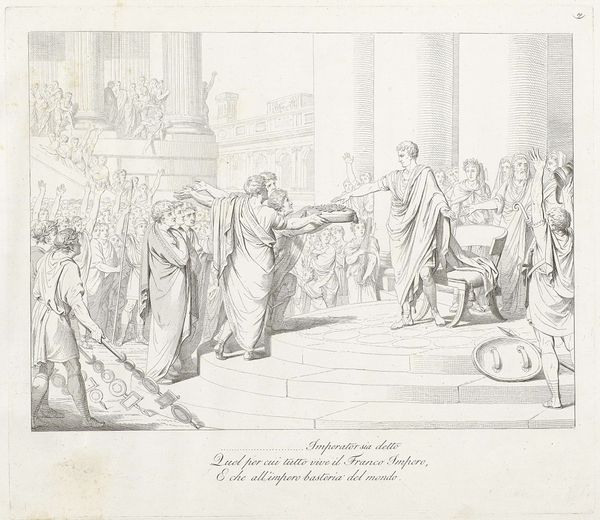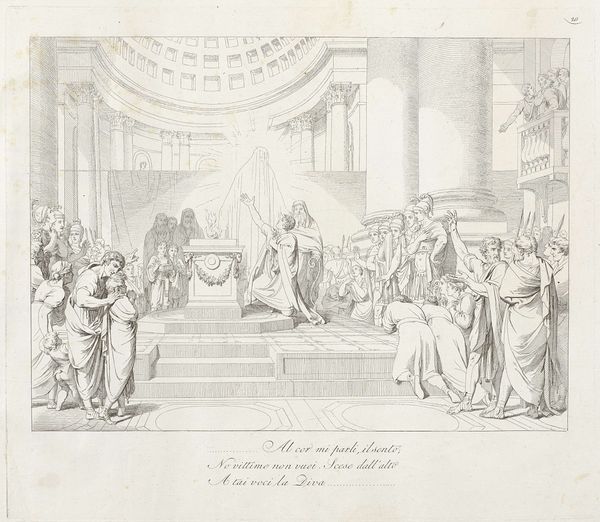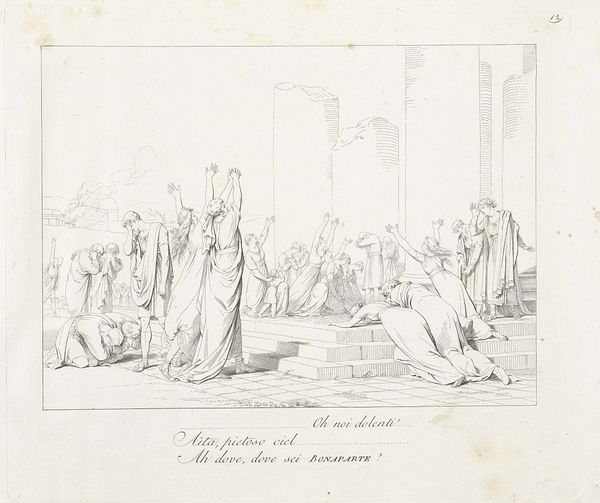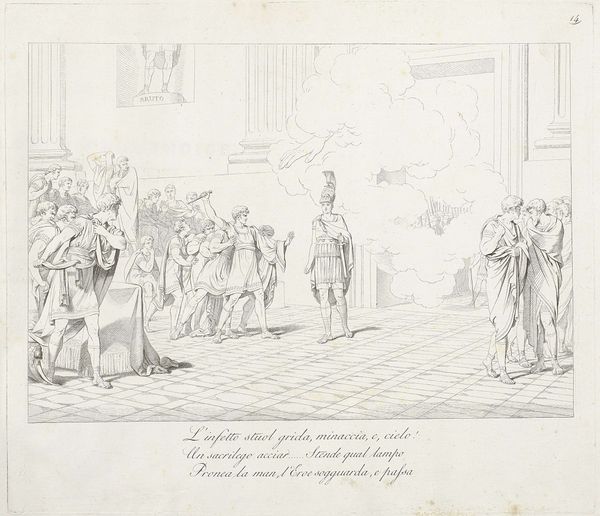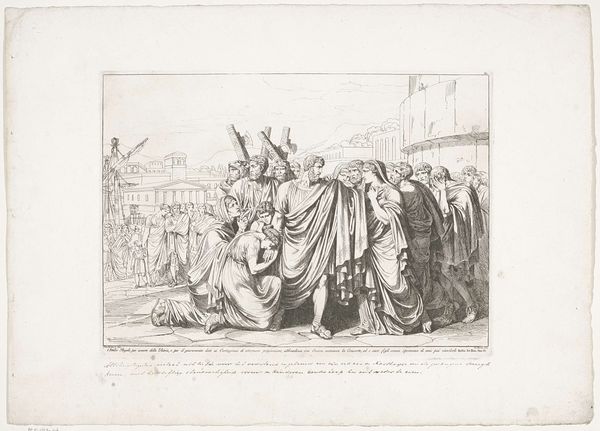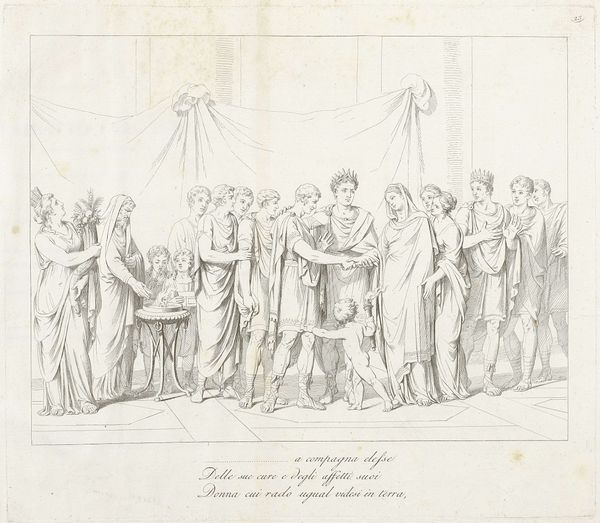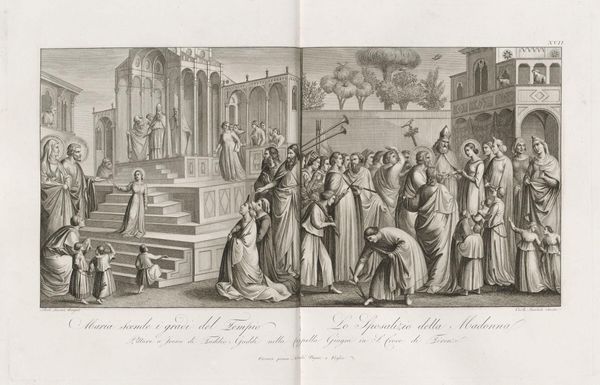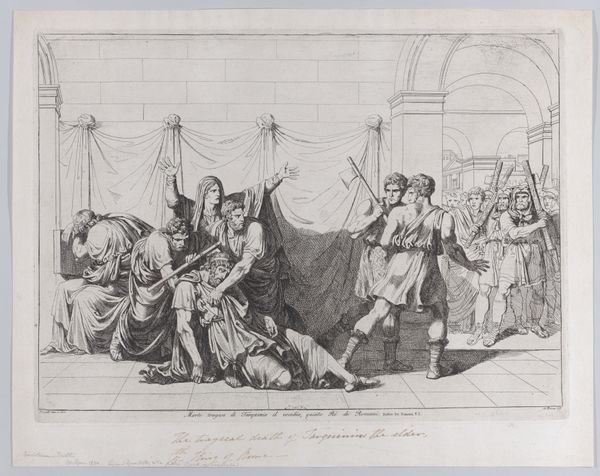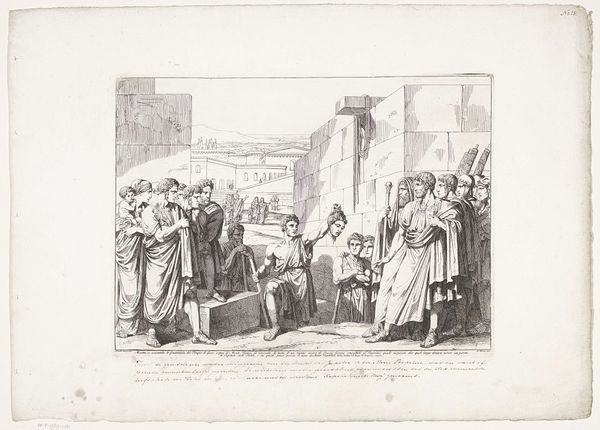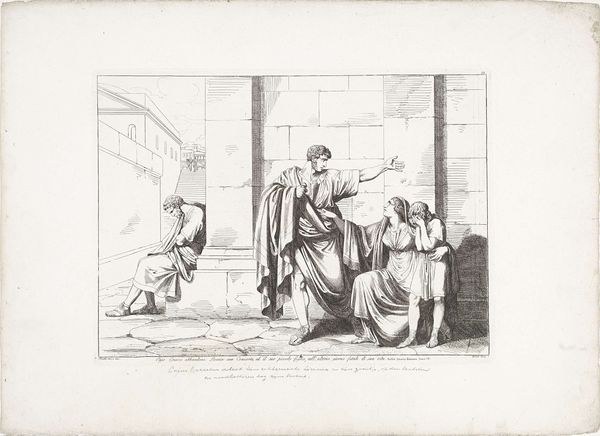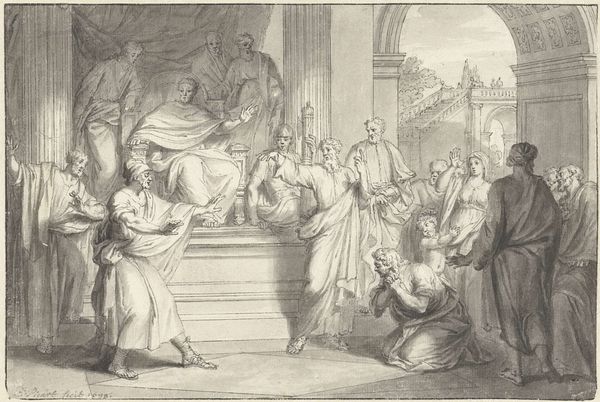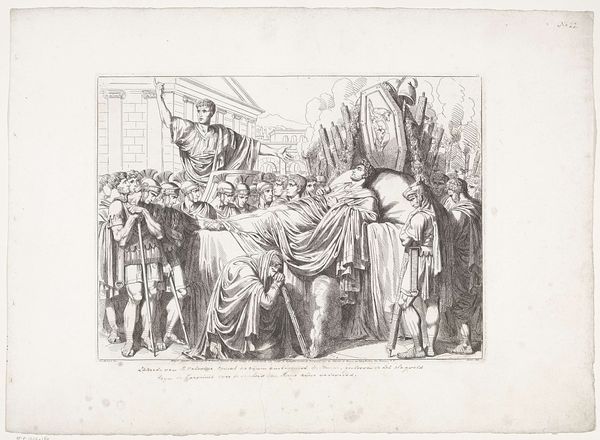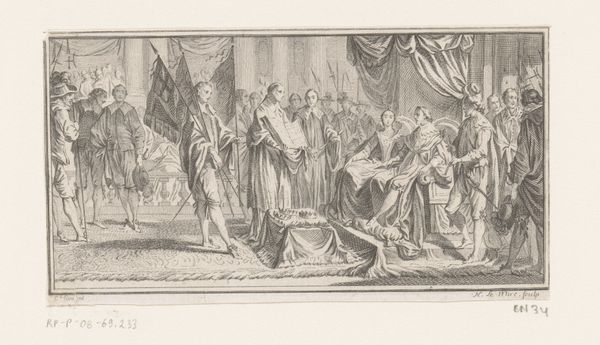
Vrouwen bidden voor de veilige terugkeer van hun mannen rond een altaar waar een offer wordt gemaakt 1808
0:00
0:00
drawing, paper, engraving
#
drawing
#
neoclacissism
#
allegory
#
narrative-art
#
classical-realism
#
figuration
#
paper
#
romanticism
#
line
#
history-painting
#
academic-art
#
engraving
#
realism
Dimensions: height 332 mm, width 382 mm
Copyright: Rijks Museum: Open Domain
Curator: This delicate engraving by Teodoro Matteini, created in 1808, is titled "Women Praying for the Safe Return of Their Husbands around an Altar Where a Sacrifice is Being Made." It strikes me as incredibly poignant, this scene of collective anxiety. What draws your attention in this work? Editor: Well, I’m struck by how theatrical the composition is – almost like a stage play. Everyone is gesturing dramatically, and the architecture feels both grand and isolating. What's the history of art like this, with such obvious, dramatic displays of emotion? Curator: Excellent observation. This work sits squarely within Neoclassicism, a movement heavily influenced by the rediscovery of classical antiquity. It emphasized order, reason, and a return to the values of ancient Greece and Rome. The theatricality is intentional – think of it as a public performance of civic virtue and emotional restraint. Consider the role of academic art; artwork that reinforces accepted values. Can you detect that within the image? Editor: Yes, I see it now! The women, though distressed, are also very idealized in their drapery. Is the political context here informing that push-pull between real emotion and idealized representation? Curator: Precisely! Think of this work not just as a sentimental scene, but as a political statement. The focus on wifely piety and supplication served to reinforce societal expectations around gender roles and patriotism, particularly during periods of political instability. It presents a model of how citizens should behave, aligning personal emotions with public good. This artwork displays those key factors in this period of Neoclassicism. Editor: I hadn't considered how actively art can work to shape public sentiment. So, the artist isn't just passively reflecting society, but actively participating in shaping it? Curator: Exactly! Matteini’s engraving provides us with valuable insight into the public role of art and the subtle politics embedded within seemingly simple imagery. The art shows an emotional situation of women pleading for their husbands, yet this also projects political meaning to society. Editor: That gives me a completely new perspective on art from this era. Thank you!
Comments
No comments
Be the first to comment and join the conversation on the ultimate creative platform.
